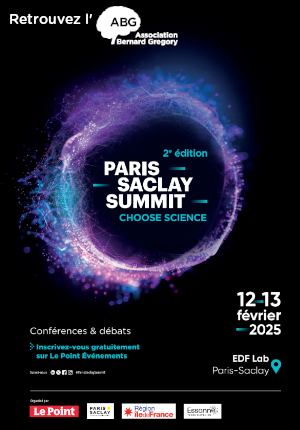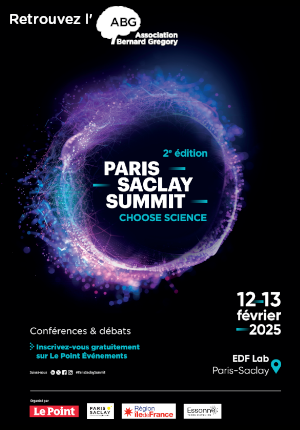COMPRENDRE L'EFFET DES COMBINAISONS D'ANTIBIOTIQUES : UNE APPROCHE QUANTITATIVE À L'ÉCHELLE DE LA CELLULE UNIQUE CHEZ ESCHERICHIA COLI // UNDERSTANDING THE EFFECT OF ANTIBIOTIC COMBINATIONS: A QUANTITATIVE APPROACH AT SINGLE CELL LEVEL IN ESCHERICHIA COLI
|
ABG-128239
ADUM-60932 |
Thesis topic | |
| 2025-01-31 |
Université Paris-Saclay GS Life Sciences and Health
Gif-sur-Yvette - France
COMPRENDRE L'EFFET DES COMBINAISONS D'ANTIBIOTIQUES : UNE APPROCHE QUANTITATIVE À L'ÉCHELLE DE LA CELLULE UNIQUE CHEZ ESCHERICHIA COLI // UNDERSTANDING THE EFFECT OF ANTIBIOTIC COMBINATIONS: A QUANTITATIVE APPROACH AT SINGLE CELL LEVEL IN ESCHERICHIA COLI
- Biology
resistance aux antibiotiques,, bacteriologie,, Escherichia coli, microfluidique, microscopie quantitative
antimicrobial resistance, bacteriology , Escherichia coli, microfluidics, quantitative microscopy
antimicrobial resistance, bacteriology , Escherichia coli, microfluidics, quantitative microscopy
Topic description
Notre société est actuellement confrontée à un problème important : l'augmentation de la résistance aux antibiotiques. Le développement de nouveaux antibiotiques ayant été très limité ces dernières années, il est urgent d'élaborer de nouvelles stratégies pour compléter les thérapies actuellement disponibles, accroître l'efficacité des antibiotiques déjà disponibles et identifier de nouvelles cibles.
Les antibiotiques sont de plus en plus souvent utilisés en association afin d'accroître leur efficacité et de limiter l'émergence de résistances. Deux classes importantes d'antibiotiques ciblent les bactéries en induisant des dommages à l'ADN ou en inhibant la synthèse des protéines, ce qui conduit finalement à l'arrêt de la croissance et la mort des bactéries. Cependant, la relation entre l'état physiologique des bactéries et leur sensibilité aux antibiotiques n'est pas encore clairement comprise surtout dans le cas de combinaison de molécules. Nous avons récemment montré qu'une combinaison d'agents endommageant l'ADN et d'inhibiteurs de la synthèse des protéines peut conduire , de manière contre-intuitive, à une efficacité moins importante que l'utilisation de chaque antibiotique seul. Les raisons qui sous-tendent cette tolérance ne sont pas encore connues, mais nous avons montré que cet effet est plus fort chez les bactéries à croissance rapide que chez celles à croissance lente.
L'objectif du projet est de caractériser expérimentalement et quantitativement comment la susceptibilité d'Escherichia coli à une combinaison d'agents endommageant l'ADN et d'inhibiteurs de la synthèse des protéines dépend du taux de croissance des cellules et d'autres paramètres de leur physiologie. Les mesures seront effectuées au niveau de populations et de cellule uniques à l'aide de dispositifs microfluidiques en combinaison avec de la microscopie quantitative avancée. Vous utiliserez des algorithmes d'apprentissage profond déjà établis pour analyser les images et extraire des paramètres quantitatifs des données expérimentales. Ces résultats seront utilisés pour informer les modèles de la croissance des cellules bactériennes exposée à des combinaisons d'antibiotiques, ce qui fournira un retour d'information pour les expériences ultérieures.
------------------------------------------------------------------------------------------------------------------------------------------------------------------------
------------------------------------------------------------------------------------------------------------------------------------------------------------------------
Our society is currently facing an important problem with the rise of multiple antibiotic resistant bacterial strains. As the development of new antibiotics has stalled in recent years, new strategies are urgently needed to supplement current available therapies. This involves increasing the efficiency of already available antibiotics as well as identifying new targets.
Antibiotics are increasingly used in combination to increase efficacy and limit emergence of resistance. Two important classes of clinically relevant antibiotics target bacteria by either inducing DNA damage or inhibiting protein synthesis which ultimately leads to stopping the growth of bacterial cells and killing them. However, the relationship between the cellular physiology of bacteria and their susceptibility to antibiotics is not yet clearly understood, especially in the case of antibiotic combinations. We have recently shown that a combination of DNA-damaging agents and protein synthesis inhibitors can lead to less efficient killing than using each antibiotic alone. Thus, counter-intuitively, treatment with two antibiotics is less efficient than a single one. The reasons underlying this tolerance are not yet known, but we have shown that this effect is stronger in bacteria growing fast than in slow-growing ones.
The objective of the project is to characterize experimentally and theoretically how the susceptibility of Escherichia coli cells to combination of various DNA damaging agents and protein synthesis inhibitors depends on the cells' growth rate and other parameters of their physiology. Measurement will be performed at the population and single-cell level using custom microfluidics devices and state-of-the-art quantitative microscopy. You will use already established deep-learning algorithms to analyse the images and extract quantitative parameters from the experimental data. These results will be used to inform models of bacterial cell growth under combinations of antibiotics exposure, which will provide feedback into subsequent experiments.
------------------------------------------------------------------------------------------------------------------------------------------------------------------------
------------------------------------------------------------------------------------------------------------------------------------------------------------------------
Début de la thèse : 01/10/2025
WEB : https://lbpa.ens-paris-saclay.fr/fr
Les antibiotiques sont de plus en plus souvent utilisés en association afin d'accroître leur efficacité et de limiter l'émergence de résistances. Deux classes importantes d'antibiotiques ciblent les bactéries en induisant des dommages à l'ADN ou en inhibant la synthèse des protéines, ce qui conduit finalement à l'arrêt de la croissance et la mort des bactéries. Cependant, la relation entre l'état physiologique des bactéries et leur sensibilité aux antibiotiques n'est pas encore clairement comprise surtout dans le cas de combinaison de molécules. Nous avons récemment montré qu'une combinaison d'agents endommageant l'ADN et d'inhibiteurs de la synthèse des protéines peut conduire , de manière contre-intuitive, à une efficacité moins importante que l'utilisation de chaque antibiotique seul. Les raisons qui sous-tendent cette tolérance ne sont pas encore connues, mais nous avons montré que cet effet est plus fort chez les bactéries à croissance rapide que chez celles à croissance lente.
L'objectif du projet est de caractériser expérimentalement et quantitativement comment la susceptibilité d'Escherichia coli à une combinaison d'agents endommageant l'ADN et d'inhibiteurs de la synthèse des protéines dépend du taux de croissance des cellules et d'autres paramètres de leur physiologie. Les mesures seront effectuées au niveau de populations et de cellule uniques à l'aide de dispositifs microfluidiques en combinaison avec de la microscopie quantitative avancée. Vous utiliserez des algorithmes d'apprentissage profond déjà établis pour analyser les images et extraire des paramètres quantitatifs des données expérimentales. Ces résultats seront utilisés pour informer les modèles de la croissance des cellules bactériennes exposée à des combinaisons d'antibiotiques, ce qui fournira un retour d'information pour les expériences ultérieures.
------------------------------------------------------------------------------------------------------------------------------------------------------------------------
------------------------------------------------------------------------------------------------------------------------------------------------------------------------
Our society is currently facing an important problem with the rise of multiple antibiotic resistant bacterial strains. As the development of new antibiotics has stalled in recent years, new strategies are urgently needed to supplement current available therapies. This involves increasing the efficiency of already available antibiotics as well as identifying new targets.
Antibiotics are increasingly used in combination to increase efficacy and limit emergence of resistance. Two important classes of clinically relevant antibiotics target bacteria by either inducing DNA damage or inhibiting protein synthesis which ultimately leads to stopping the growth of bacterial cells and killing them. However, the relationship between the cellular physiology of bacteria and their susceptibility to antibiotics is not yet clearly understood, especially in the case of antibiotic combinations. We have recently shown that a combination of DNA-damaging agents and protein synthesis inhibitors can lead to less efficient killing than using each antibiotic alone. Thus, counter-intuitively, treatment with two antibiotics is less efficient than a single one. The reasons underlying this tolerance are not yet known, but we have shown that this effect is stronger in bacteria growing fast than in slow-growing ones.
The objective of the project is to characterize experimentally and theoretically how the susceptibility of Escherichia coli cells to combination of various DNA damaging agents and protein synthesis inhibitors depends on the cells' growth rate and other parameters of their physiology. Measurement will be performed at the population and single-cell level using custom microfluidics devices and state-of-the-art quantitative microscopy. You will use already established deep-learning algorithms to analyse the images and extract quantitative parameters from the experimental data. These results will be used to inform models of bacterial cell growth under combinations of antibiotics exposure, which will provide feedback into subsequent experiments.
------------------------------------------------------------------------------------------------------------------------------------------------------------------------
------------------------------------------------------------------------------------------------------------------------------------------------------------------------
Début de la thèse : 01/10/2025
WEB : https://lbpa.ens-paris-saclay.fr/fr
Funding category
Funding further details
Contrats ED : Programme blanc GS-LSaH
Presentation of host institution and host laboratory
Université Paris-Saclay GS Life Sciences and Health
Institution awarding doctoral degree
Université Paris-Saclay GS Life Sciences and Health
Graduate school
577 Structure et Dynamique des Systèmes Vivants
Candidate's profile
Étudiant(e) ayant fait un M2R de microbiologie Étudiant(e) ayant fait un M2R de biophysique, avec un fort intérêt pour la biologie expérimentale. un bonne connaissance de l'anglais serait un plus
A student with a Master's in microbiology or a Student with a Master's in biophysics and a strong interest in experimental biology.
A student with a Master's in microbiology or a Student with a Master's in biophysics and a strong interest in experimental biology.
2025-03-24
Apply
Close
Vous avez déjà un compte ?
Nouvel utilisateur ?
More information about ABG?
Get ABG’s monthly newsletters including news, job offers, grants & fellowships and a selection of relevant events…
Discover our members
 Ifremer
Ifremer  TotalEnergies
TotalEnergies  Généthon
Généthon  ADEME
ADEME  PhDOOC
PhDOOC  Laboratoire National de Métrologie et d'Essais - LNE
Laboratoire National de Métrologie et d'Essais - LNE  MabDesign
MabDesign  Tecknowmetrix
Tecknowmetrix  ANRT
ANRT  CASDEN
CASDEN  Aérocentre, Pôle d'excellence régional
Aérocentre, Pôle d'excellence régional  Institut de Radioprotection et de Sureté Nucléaire - IRSN - Siège
Institut de Radioprotection et de Sureté Nucléaire - IRSN - Siège  CESI
CESI  ONERA - The French Aerospace Lab
ONERA - The French Aerospace Lab  MabDesign
MabDesign  Groupe AFNOR - Association française de normalisation
Groupe AFNOR - Association française de normalisation  Nokia Bell Labs France
Nokia Bell Labs France  Institut Sup'biotech de Paris
Institut Sup'biotech de Paris  SUEZ
SUEZ







